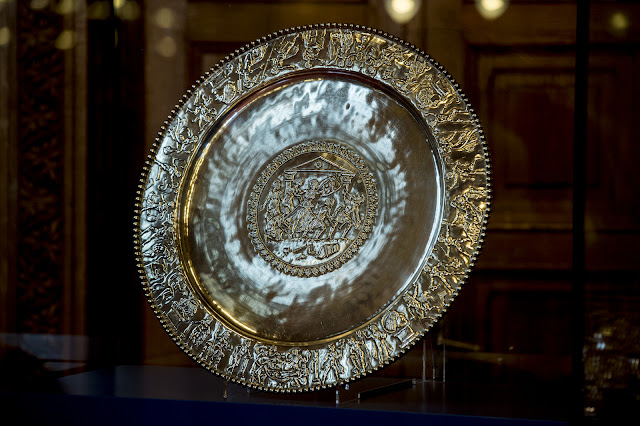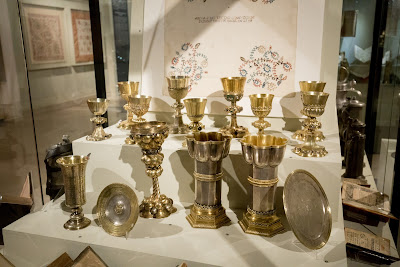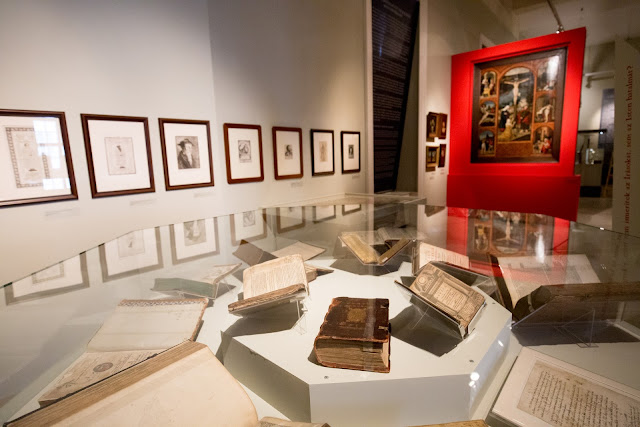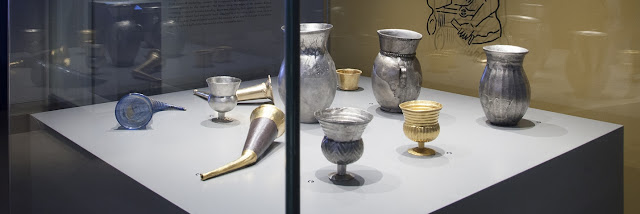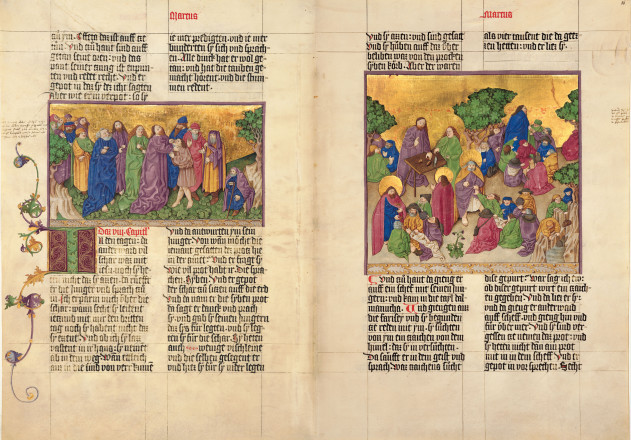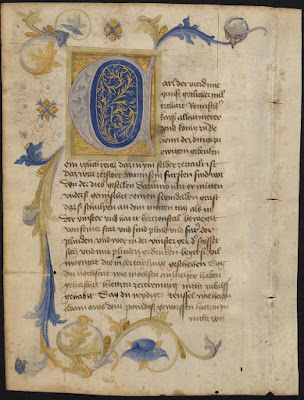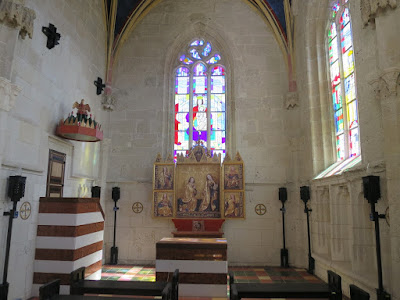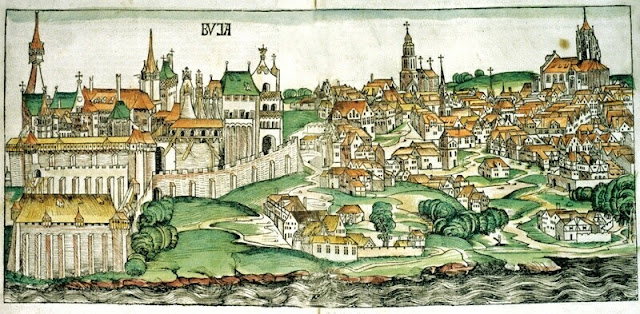 |
| Presentation in the Temple from the main altar of Okolicsnó (Hungarian National Gallery) |
A new exhibition dedicated to Master of Okolicsnó has opened recently at the Slovak National Gallery in Bratislava (Esterházyho Palac, open from 7. September - 26 November, 2017). The Master was named after the former high altar from the Franciscan monastery in Okolicsnó in Upper Hungary (Okoličné, Slovakia), and he was active around 1500. The most important patron of the Franciscan monastery of Okolicsnó was John Corvin, natural son of King Matthias Corvinus, who died in 1504.
The Master of Okolocsnó is regarded as one of the best painters of Central European Late Gothic. His paintings show the influence of Flemish painting, as well as that of the Italian Renaissance. He led a prolific workshop, creating altarpieces in the eastern region of Upper Hungary during the first decades of the 16th century (including two side altars in the parish church of Szmrecsány/Smrečany, 1510).
The altar of Okolicsnó, which gave the name to the painter, was dismantled back in the 18th century, but its parts have been preserved in several collections in Slovakia, Poland and Hungary. The Slovak National Gallery acquired one of the panels in 2010 – showing the Crucifixion – from the former altar. The current exhibition coincides with the restoration of this panel. The exhibition, which was curated by Dušan Buran, is accompanied by a catalogue about the painter, listing all of the surviving works by the Master of Okolicsnó. A digital version, where you can browse the material of the exhibition - including all works of the Master - is available on the webumenia.sk website (this includes prints and sculptures related to the paintings as well).
The altar of Okolicsnó, which gave the name to the painter, was dismantled back in the 18th century, but its parts have been preserved in several collections in Slovakia, Poland and Hungary. The Slovak National Gallery acquired one of the panels in 2010 – showing the Crucifixion – from the former altar. The current exhibition coincides with the restoration of this panel. The exhibition, which was curated by Dušan Buran, is accompanied by a catalogue about the painter, listing all of the surviving works by the Master of Okolicsnó. A digital version, where you can browse the material of the exhibition - including all works of the Master - is available on the webumenia.sk website (this includes prints and sculptures related to the paintings as well).





